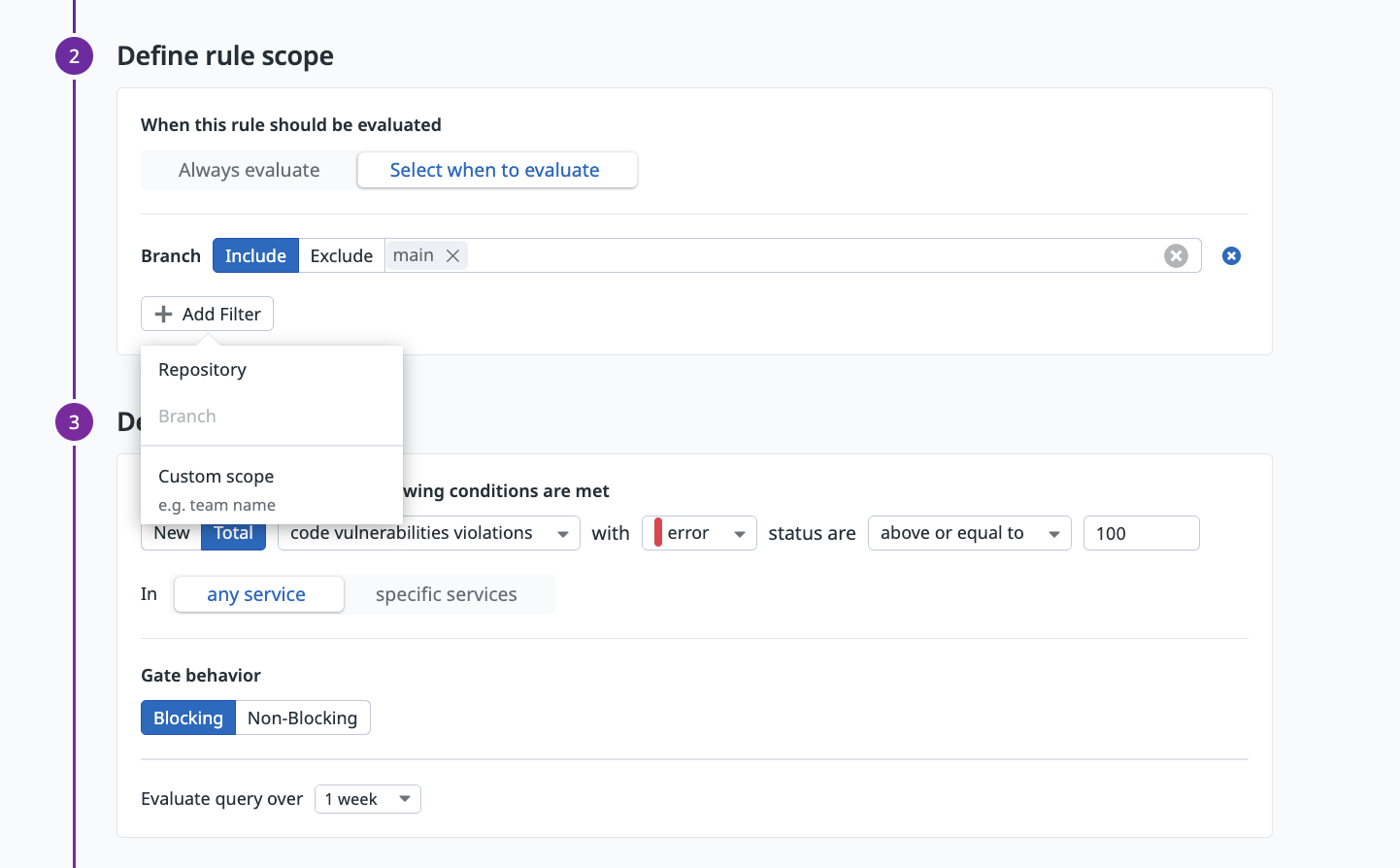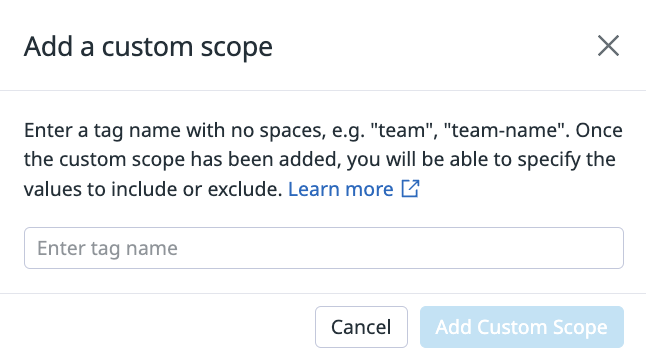- Principales informations
- Getting Started
- Datadog
- Site Datadog
- DevSecOps
- Serverless for AWS Lambda
- Agent
- Intégrations
- Conteneurs
- Dashboards
- Monitors
- Logs
- Tracing
- Profileur
- Tags
- API
- Service Catalog
- Session Replay
- Continuous Testing
- Surveillance Synthetic
- Incident Management
- Database Monitoring
- Cloud Security Management
- Cloud SIEM
- Application Security Management
- Workflow Automation
- CI Visibility
- Test Visibility
- Intelligent Test Runner
- Code Analysis
- Learning Center
- Support
- Glossary
- Standard Attributes
- Guides
- Agent
- Intégrations
- OpenTelemetry
- Développeurs
- Authorization
- DogStatsD
- Checks custom
- Intégrations
- Create an Agent-based Integration
- Create an API Integration
- Create a Log Pipeline
- Integration Assets Reference
- Build a Marketplace Offering
- Create a Tile
- Create an Integration Dashboard
- Create a Recommended Monitor
- Create a Cloud SIEM Detection Rule
- OAuth for Integrations
- Install Agent Integration Developer Tool
- Checks de service
- IDE Plugins
- Communauté
- Guides
- API
- Application mobile
- CoScreen
- Cloudcraft
- In The App
- Dashboards
- Notebooks
- DDSQL Editor
- Alertes
- Infrastructure
- Métriques
- Watchdog
- Bits AI
- Service Catalog
- API Catalog
- Error Tracking
- Service Management
- Infrastructure
- Universal Service Monitoring
- Conteneurs
- Sans serveur
- Surveillance réseau
- Cloud Cost
- Application Performance
- APM
- Profileur en continu
- Database Monitoring
- Agent Integration Overhead
- Setup Architectures
- Configuration de Postgres
- Configuration de MySQL
- Configuration de SQL Server
- Setting Up Oracle
- Setting Up MongoDB
- Connecting DBM and Traces
- Données collectées
- Exploring Database Hosts
- Explorer les métriques de requête
- Explorer des échantillons de requêtes
- Dépannage
- Guides
- Data Streams Monitoring
- Data Jobs Monitoring
- Digital Experience
- RUM et Session Replay
- Product Analytics
- Surveillance Synthetic
- Continuous Testing
- Software Delivery
- CI Visibility
- CD Visibility
- Test Visibility
- Exécuteur de tests intelligent
- Code Analysis
- Quality Gates
- DORA Metrics
- Securité
- Security Overview
- Cloud SIEM
- Cloud Security Management
- Application Security Management
- AI Observability
- Log Management
- Pipelines d'observabilité
- Log Management
- Administration
Understanding How Rule Scopes Work in Quality Gates
Cette page n'est pas encore disponible en français, sa traduction est en cours.
Si vous avez des questions ou des retours sur notre projet de traduction actuel, n'hésitez pas à nous contacter.
Si vous avez des questions ou des retours sur notre projet de traduction actuel, n'hésitez pas à nous contacter.
Overview
Quality Gates allows you to gate your workflows based on signals in Datadog. When creating a rule, you can define a rule scope, which states when the rule should be evaluated.
To filter rules that are evaluated for a specific CI pipeline, you can add a custom scope when creating a rule. This process requires you to use the --scope option with the datadog-ci gate evaluate command in your build configuration.
For example:
datadog-ci gate evaluate --scope team:backend --scope team:frontend
Define a rule scope
When the datadog-ci gate evaluate command is invoked, the rules having a scope matching the command context are evaluated, and you can filter on rules that tag the backend or frontend teams.
For each scope (for example, branch), you can select included or excluded values.
- When included values are selected, the rule is evaluated if one or more included values are part of the command context.
- When excluded values are selected, the rule is not evaluated if any of the excluded values are part of the command context.
To create a rule that is evaluated in all branches except main of the example-repository repository, you can create a rule with the following scope.
- Click
Select when to evaluate. - Enter
example-repositoryin the Repository field and click Include. - Click Add Filter and select Branch.
- Enter
mainin the Branch field and click Exclude.
If a rule does not contain a scope, it is evaluated for all values for that scope.
For example, if a rule does not contain the repository scope, it is evaluated for all repositories.
Add a custom scope
In addition to branch and repository, you can define custom scopes to filter rules that are evaluated for a specific CI pipeline.
To add a custom scope when creating a rule:
- Click + Add Filter and select Custom Scope.
- Define the scope name, for example,
team. - Define the scope’s included or excluded values.
Unlike the branch and repository scopes, custom scopes must be passed to the datadog-ci gate evaluate command using the --scope option.
For example, you can create a rule that is evaluated for the example-repository repository, but only when the team is backend.
Click
Select when to evaluate.Enter
example-repositoryin the Repository field and click Include.Click Add Filter and select Custom scope.
Enter a tag name and click Add Custom Scope.
Enter
backendin the team field and click Include.
The rule is evaluated when the following command is invoked in a CI pipeline of the example-repository repository:
datadog-ci gate evaluate --scope team:backend
The rule is not evaluated when the following commands are invoked instead:
datadog-ci gate evaluate, which does not specify any team.datadog-ci gate evaluate --scope team:api --scope team:frontend, which specifies teams other thanbackend.
Further reading
Documentation, liens et articles supplémentaires utiles:





